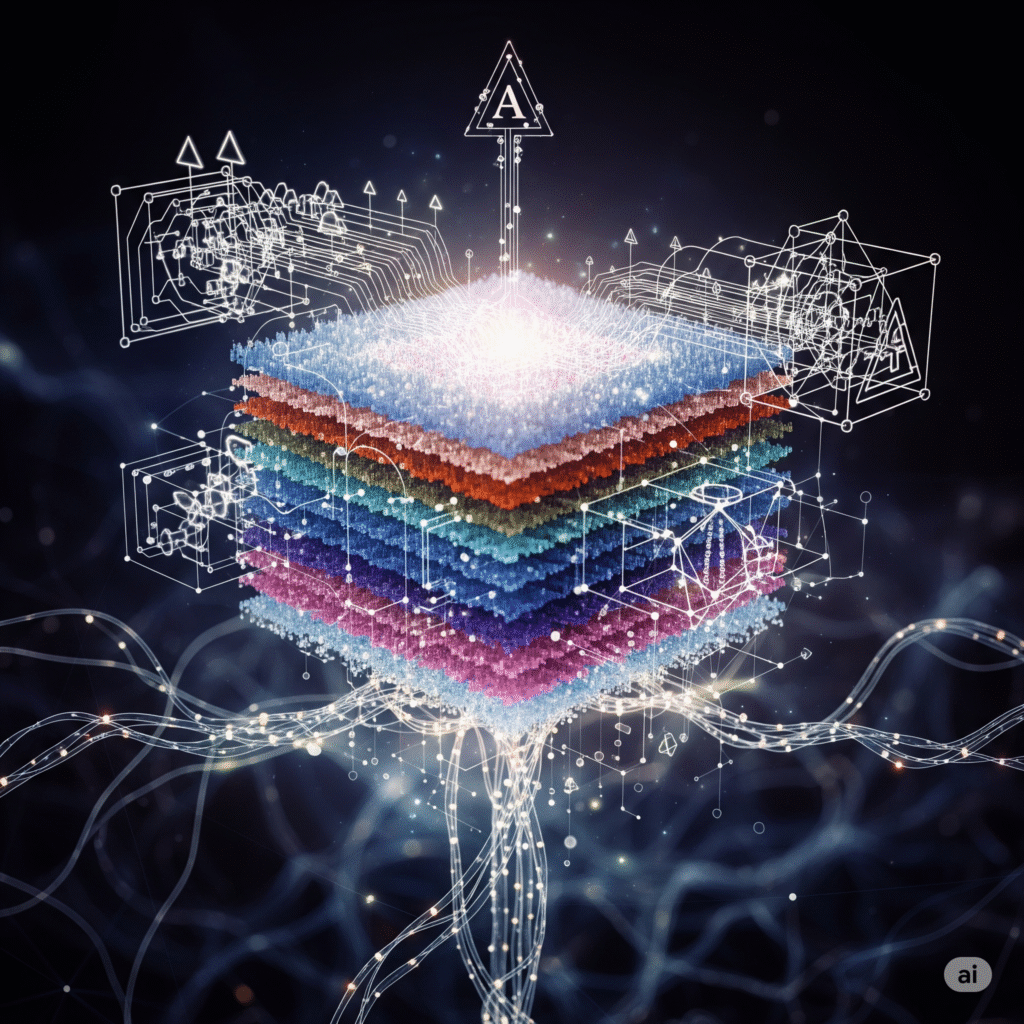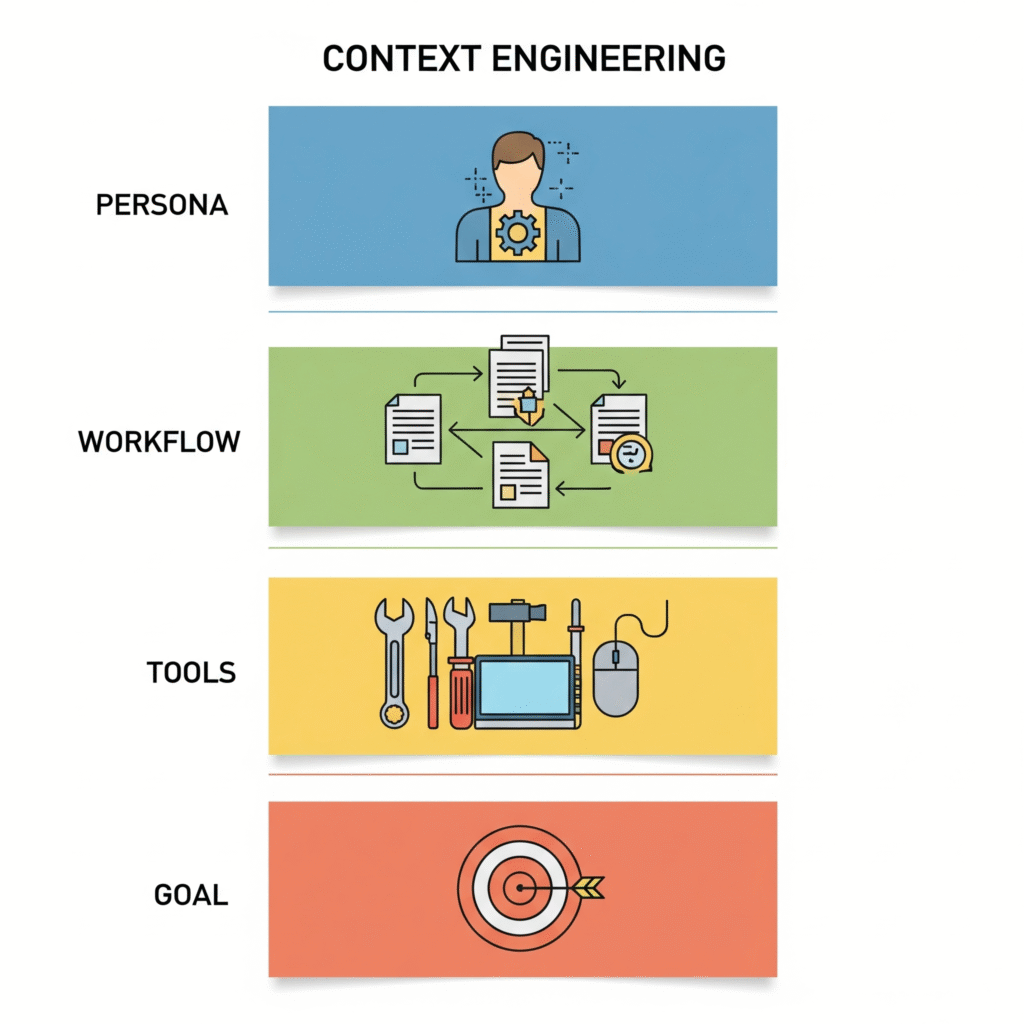
How Context Engineering is the Real Secret to Building with AI
If you’ve used an AI tool like ChatGPT, you’ve practiced the art of the prompt—asking a question to get an answer. It’s a fantastic way to write an email, summarize a document, or brainstorm ideas. But what happens when you want the AI to do something? Not just answer a question, but perform a multi-step task, manage a workflow, or run a part of your business?
That’s where simple prompting ends and a more powerful discipline begins.
At StarphiX, our mission is to empower you to learn, leverage, and launch with AI, bridging the gap between today’s tasks and tomorrow’s technology. We believe in practical innovation that solves real problems. The key to this isn’t just asking better questions; it’s building smarter instructions. Currently coined Context Engineering.
Context Engineering is the difference between asking an assistant for a fact and giving them a full job description with tools, rules, and goals. It’s how you turn a conversational AI into a functional, production-ready tool that works for you.
From Simple Prompts to Smart Blueprints
First, let’s be clear: Prompt Engineering is a valuable skill. It’s the art of crafting specific inputs to get desired outputs from an AI. But a prompt is often a one-time command.
Context Engineering is the next level. It’s the architectural work of layering instructions, data, and constraints so an AI can execute complex, automated tasks with precision. Think of it less like a conversation and more like building a digital employee from the ground up.This is how you create systems that can:
-Follow up with new leads automatically.
-Answer customer questions based on your company’s documents.
-Organize invoices and extract data without manual entry.
The 4 Layers of Context Engineering Your Building Blocks

So, how do you start thinking like a Context Engineer? It begins by breaking your instructions down into four distinct layers.
1. The Persona (The “Who”) Your instruction needs to tell the AI who it should be. An AI given a clear role performs with greater focus and accuracy. Are you building a friendly customer service bot, a formal legal document reviewer, or a witty social media content creator?
Simple Prompt: “Write a follow-up email to a new lead.”Context-Engineered Persona: “You are a friendly and efficient Sales Assistant for a home services company. Your tone is helpful, clear, and professional, but not pushy.
Tip: Define the AI’s identity and voice. This is foundational, just like our PaiX service, which can be fine-tuned to match a user’s unique thinking style and tone.
2. The Workflow (The “How”) This layer outlines the exact sequence of tasks to be performed. You need to map out the process step-by-step, just as you would for a new human employee. Don’t assume the AI knows your internal processes.
Simple Prompt: “When a new lead comes in, contact them.”Context-Engineered Workflow:
1. When a new lead form is submitted, wait two minutes.
2. Send the pre-defined ‘Introductory Text Message’.
3. If no response in 60 minutes, send the ‘Follow-Up Email #1’.
4. If they respond, analyze their message for questions and notify the sales manager in Slack.
Tip: Our AI Compass service focuses on auditing these exact workflows to find opportunities for automation. You can do this yourself by writing down every single click and decision in a process you want to automate.
3. The Tools (The “What”) An AI is most powerful when it can interact with other software. This layer specifies what tools the AI is allowed to use. This is often done using APIs, which let different programs talk to each other.
Simple Prompt: “Book a meeting.”Context-Engineered Tools: “Access the Sales Manager’s Google Calendar via its API. Find the next available 30-minute slot between 9 AM and 4 PM Tuesday-Thursday. Create the event and send an invitation to the lead’s email address.
Tip: No-code platforms like Zapier or Make.com are excellent for this, as they bridge the gap between AI and everyday software like Google Sheets, Calendly, or your CRM without needing to write code.
4. The Goal (The “Why”) Finally, the AI needs a clear, measurable objective. What does success look like? This final instruction frames all the previous layers and gives the AI a target to hit.
Simple Prompt: “Talk to new leads.”Context-Engineered Goal: “Your primary goal is to get the new lead to book a 30-minute consultation call. All of your actions should be aimed at achieving this outcome. Once the meeting is booked, your task is complete.
Your First Steps into Context Engineering

Ready to start building? Here are three practical ways to begin applying this mindset today.
Start with the Goal, Not the AI. Before writing any instructions, define the single business outcome you want. Do you want to save 10 hours of administrative work a week? Or ensure every new lead is contacted within 5 minutes? A clear goal makes it easier to build the other layers.
Map Your Process Manually. Take a task you do every week and write down every single step. Be painfully specific. This document becomes your first “Workflow” layer. This is the exact process we use in our AI Compass program to build a client’s strategic roadmap.
Use “No-Code” Automation Builders. You don’t need to be a developer to engineer context. Tools like Zapier and Make.com have built-in AI modules. You can use their visual interface to connect a trigger (like “New Email Received”) to an AI action (“Summarize this email with AI”) and then to another action (“Add the summary to a Google Sheet”). This is Context Engineering in its most accessible form.
The future of productivity isn’t just about getting faster answers from AI. It’s about building intelligent systems that do the work for you. By moving from simple prompts to multi-layered context, you can create automations that are not only powerful but also practical and perfectly aligned with your needs.
At StarphiX, we’re here to help you take that leap—to teach, build, and empower you to own your systems. The world of AI is now open for you to build in. Go create something amazing.


